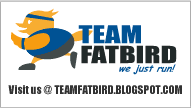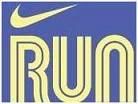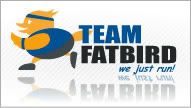Power of the hills...
It was hills training on Tuesday....4.5laps of the 1.6km MF hills, followed by 2 flights of 200-step stairs. As usual, a large turnout, with many of the new eager beavers raring to take up the challenge. The new runners have a rather good running base, and have been improving by leaps and bounds with each training....amazing.
A short warm-up jog from ClubHouse to the MF Loop carpark. To avoid congestion, the gals went ahead first, followed by the guys 3min later. I ran on the inside path to avoid the oncoming traffic down the busy MF slopes....though it was slightly longer, it was also more gradual at certain sections. I didn't feel too tired about 3 8min+ laps. Finished 4laps, and waited for Bev to go for the 1/2 lap. on the way up, I could see the power of the new gal runners, as they went up 5 times without too much trouble...wow...I recalled that I really sweat when I first did 2 laps of that MF loop...
Bev and I did 1 set of stairs and called it a night....back to ClubHouse for a good stretching session....lots of discussions this evening about our ChiangMai trip and marathon at the end of December...Eugene, Bug, DO were all making plans to do a tour package instead, with lots of sights, food and shopping. With the Chinag Mai Marathon plans laid, DO and I started to 'jio' people for the Pacesetters GE 30km in Jan08...seemed like there will be a large crowd from MF again for this run...should be fun again!
Looking back at the hills training, we recall a recent article shared by PS from Runner's World about the merits of hills and how to do hills training the proper way...excerpts from that Runner's World article...
| Copyright © 2006 Rodale Inc. All rights reserved. |
 Hill Running Proper Form For Peak Performance |
| The hills in a cross-country race can make or break a runner. Tackling a steep hill when you're tired is a formidable challenge, and your success will depend as much on proper running form as on the strength you've built up from training. Check out the posture-the position of the arms, shoulders, head, legs and torso-of these runners from Colts Neck High School in New Jersey, demonstrated on the state cross-country course at hilly Holmdel Park. Colts Neck coach Jim Schlentz, building an outstanding young squad, concentrates on teaching the athletes proper form. Make sure you work on good form in daily practice. If you have bad habits in practice, you'll carry them into the race. Knee Lift Shorten your stride and swing your arms back so your elbows come up high. Arm action has a lot to do with running form, and by moving your arms well back, your legs will move faster, and knees higher, on the hill. Arm Action Move your arms up and back, not side to side, helping to keep your center of gravity in front of you. Your arms should form a 90-degree angle at the elbow. Keep your hands loose, no fists. Body Position Keep your back straight and erect, with a slight forward lean. Lean in from the hips and don't let your torso droop. Relax your shoulders, no hunching. Head Position Keep your gaze straight ahead. No looking up or down or you'll tighten your neck and shoulders, hampering your breathing and stride. Look at the ground just ahead of you-not the top of the hill. Reaching the Peak As you reach the top of the hill, prepare to resume your normal stride pattern and, instead of resting, attack the course while your opposition may be easing up. If your form is correct on the hill, you should have plenty of energy to surge coming up and over the peak. Running Downhill Lengthen your stride, lower your knees, keep your hips under you and shoulders slightly in front of you. Let your weight pull you forward. Don't lean back in a braking movement; that will only slow you down. Back to article |
 Want To Run Fast? Run Uphill Just 10 seconds can make you stronger and faster--you only have to run uphill, fast. |
| Ten seconds. That's all the time it takes to become a faster runner. Too good to be true? Not according to Brad Hudson, the coach of such distance stars as Dathan Ritzenhein and Jorge Torres. All you have to do is run those 10 seconds uphill--as fast as you can. "There's nothing better for developing speed and muscle power," says Hudson. When Hudson, a 1991 and '93 world championship competitor in the marathon, started coaching a few years back, he looked at successful programs and found they all had one thing in common: hills. And as he sifted through research, he noted that even a small amount of hill work could yield big results: a jump in leg strength, running economy--how efficiently your body uses oxygen--and aerobic capacity. "I saw the science, and then I saw the results in my athletes," says Hudson. One of those athletes, James Carney, improved his 10-K personal best last spring to 27:43 after incorporating Hudson's hill training into his routine. Torres credits hill work for putting him in contention for the 2008 U.S. Olympic team for the 10,000 meters. And Ritzenhein, who ran 2:14:01 last year in his debut marathon, believes hills have made him less injury-prone. Of course, Hudson's athletes are professional runners, so short sprints are only part of their hill routine But for the rest of us, 10-second hill repeats are the most efficient way to build year-round strength and speed. Uphill Gains Hit the hill, but make it fast and short, and you get the maximum amount of training effect with the minimum amount of injury risk. "The best way to recruit fast-twitch muscle fibers is to run at max intensity," says Hudson. "The best way to build leg strength is hill running. So we run all-out up a steep hill. But we keep it to 10 seconds to avoid producing lactate and becoming fatigued." Running no more than 10-second repeats also reduces injury risk by limiting your fast-running time. And hills by their nature lessen the risk of injury because the slope shortens the distance you have to "fall" or land, reducing impact. "Studies of sprinting uphill show that the muscles are in constant 'overload' and the nervous system is firing hard," says Hudson. "It's the same speed benefit as track sprints, but safer." The fast pace builds speed, but it's the hill that provides the strength benefit. Running up an incline places the same demand on your muscles as weight training--your glutes, quads, hamstrings, and calves must "lift" you up the slope--but they're more specific to running. And just as with plyometrics (jump drills), the "explosive" action of uphill sprints improves elasticity in your muscles and tendons, which allows you to spring quickly into action after landing. Hills Year-Round To develop leg strength throughout the year, Hudson's runners do short sprints on a hill that is between a six to 10 percent grade. They tack these surges onto the end of two easy runs a week. At the start of the season, they'll log just two 10-second repeats. The next week they'll do three. Once they reach eight, they cut back to doing them once a week. The first repeat is done at a fast pace, the rest at top speed. Each repeat is followed by at least two minutes of recovery, which includes walking downhill backward to keep pressure off the knees. "They're not easy to do," says Hudson. "But the pain's gone in a second or two." And you're left with stronger, faster legs. |















0 Comments:
Post a Comment
<< Home